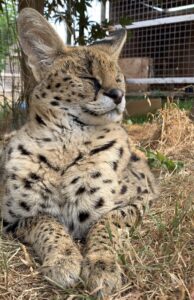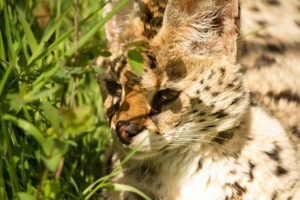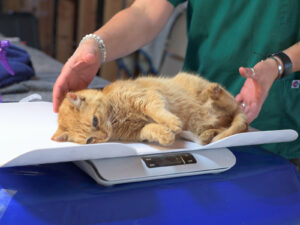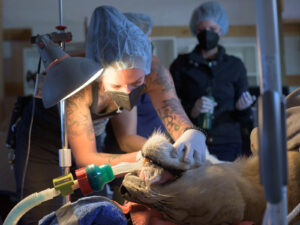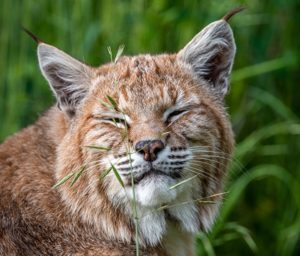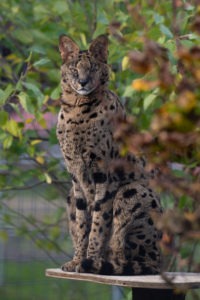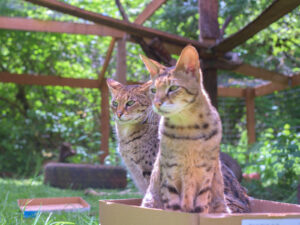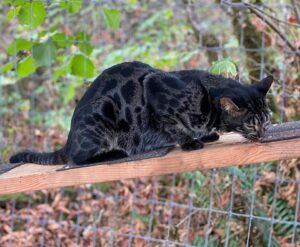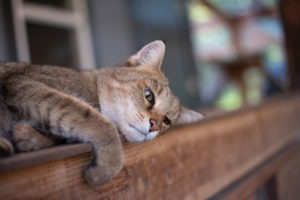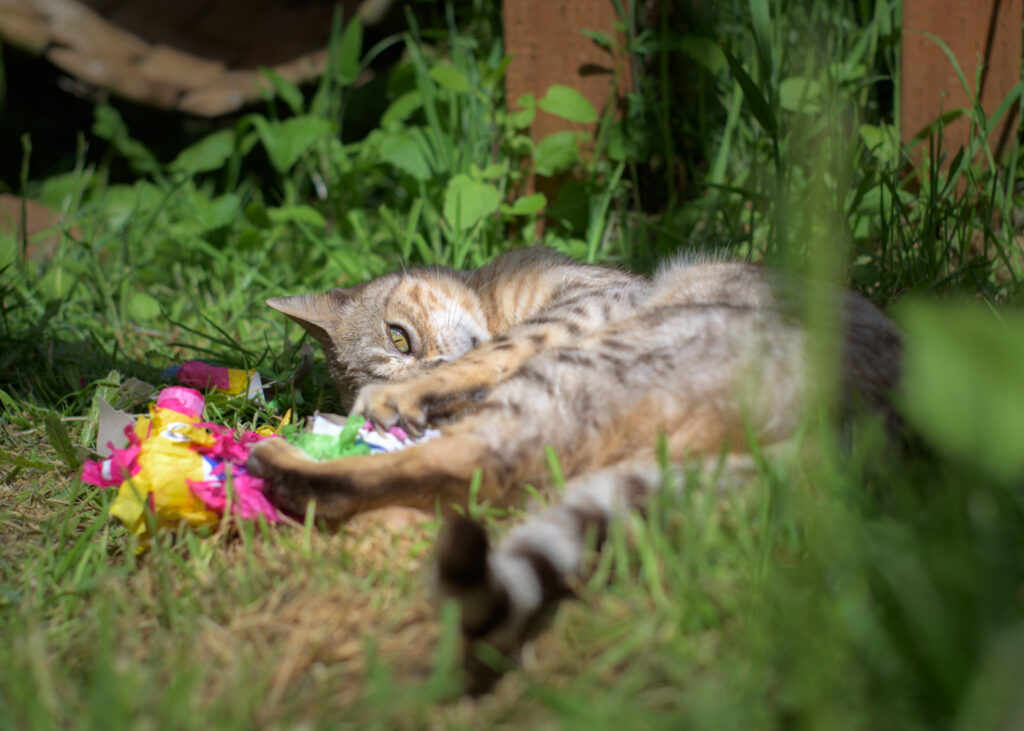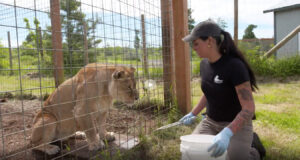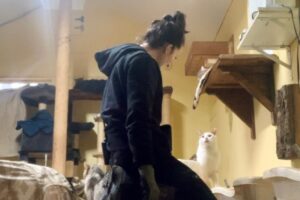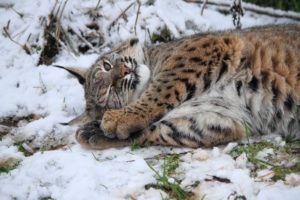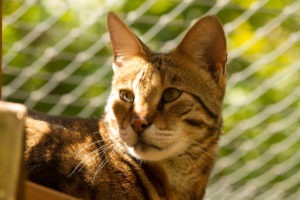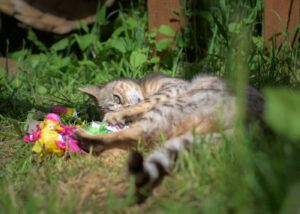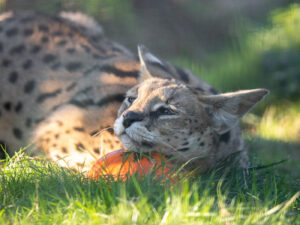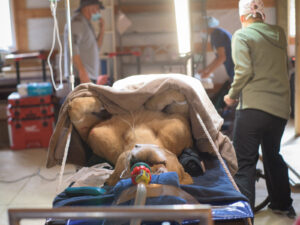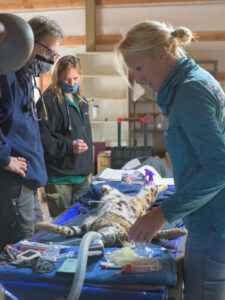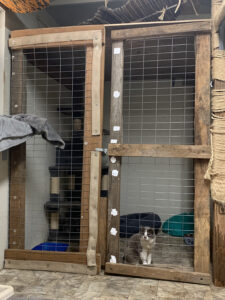2021: A Look Back
The Keeper Journal
2021 was quite the year – we're sure you can relate. From a freezing ice storm in February to blistering temperatures during the summer, the weather alone was enough to keep the keepers on their toes. But, of course, that wasn't all; because when you have almost one hundred animals in your care, each day is likely to be just as exciting as the last.
Onsite updates
The hospital
A continuous project this year was the construction of our hospital building, a future home for medical supplies, as well as a place to host vets to come and conduct procedures like surgeries and wellness exams. This will mean less offsite transporting of cats and 24/7 access to quality medical supplies.
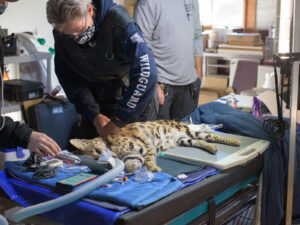
One of our animal sanctuary vets and her team visited us in September to spay Kariba, perform dental care and give overall wellness checks to a number of cats. They were able to utilize the unfinished hospital space, getting us excited for all the possibilities it will offer us once completed.
The lockouts
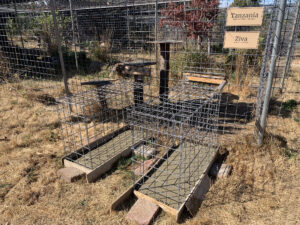 Another project the keepers worked on throughout the year was the designing, building and installation of feeding lockouts on many of the bobcat and serval enclosures. The lockouts enable streamlined feeding, minimize fights between penmates and help get the cat into a secure, safe spot when we need to crate them for a medical exam or move.
Another project the keepers worked on throughout the year was the designing, building and installation of feeding lockouts on many of the bobcat and serval enclosures. The lockouts enable streamlined feeding, minimize fights between penmates and help get the cat into a secure, safe spot when we need to crate them for a medical exam or move.
We hope in the future to also install large lockouts similar to these on all our large cat (tiger and lion) pens, as they help reduce stress for the animals when they're already comfortable entering lockouts/crates on their own.
New residents
2021 also brought a number of new residents to WildCat Ridge. Some of them came with severe health complications, and others were turned in simply because their owners realized owning a wildcat is, well, not a great choice. But we're thrilled to report they've all adapted to their new homes beautifully, and won the hearts of their keepers.
Misha
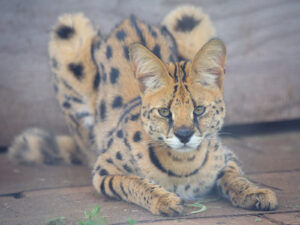
Misha was surrendered to us after his owners were shocked to receive a full bred serval after ordering a savannah cat from a Russian breeder. They attempted to care for him, but unfortunately a diet lacking nutrition led to the development of metabolic bone disease (MBD) resulting in a number of fractures in his legs.
In order to give him better care, they sought us out.
Today Misha lives happily with his serval BFF Cairo and is supplied a well-rounded diet of bones, chicken and beef, which we're pretty sure is the most anticipated part of his day.
Duma
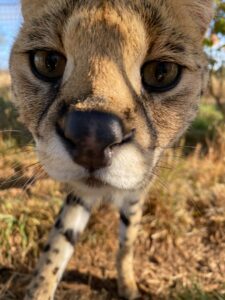 Feisty girl Duma came to us in the fall after her owners had to evacuate their home due to severe fires in British Columbia. They had provided her with loving care, a healthy diet and plenty of space to run, but ultimately knew that the security we could provide at our animal sanctuary was the best choice for her.
Feisty girl Duma came to us in the fall after her owners had to evacuate their home due to severe fires in British Columbia. They had provided her with loving care, a healthy diet and plenty of space to run, but ultimately knew that the security we could provide at our animal sanctuary was the best choice for her.
Duma immediately enchanted us all, even though it took some time to adjust her to the normal diet around here (but she is a cat, after all).
Today she lives peacefully in her enclosure, ever curious of the keepers, with a deep love for mice and basking in the sun.
Rufina
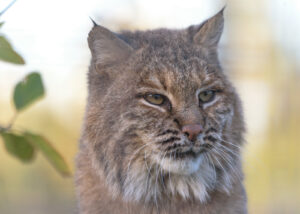
Rescued from a condemned roadside zoo in New York, Rufina arrived with the fluffiest coat of any bobcat on property and an attitude that clearly says, "I run this place, you just work here."
Even though she likes her space, Rufina is always ready to engage with enrichment, and is quick to come out to the fence line when called, especially if it means receiving an evening snack.
Neeme
Neeme has been one of our most challenging newcomers, arriving incredibly underweight with a complicated illness many were having a challenge treating.
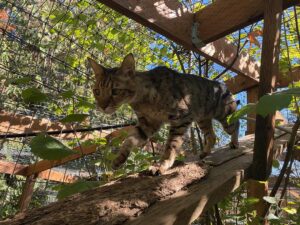
However, with a regimented medicine routine, expert veterinarian care, close attention to dietary preferences and tons and tons of neck scratches, Neeme is not only gaining back his weight, he has become a happy, healthy and normal cat who demands his food every morning and evening and wants the attention of his keepers more than anything in the world.
Looking forward
As the new year takes full swing, we're already anticipating many new projects, potential new residents and the ever present changes in routines. Because after all, adapting to new challenges as they come is what makes the animal care field truly so rewarding.
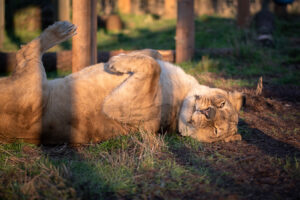

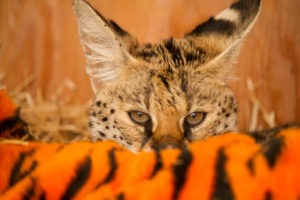 Sable had been purchased as a kitten in 2001 from a pet store in Washington State. Unfortunately, she was poorly cared for by her original owners, and was taken by a caring friend who found Sable very ill and with many open wounds on her body.
Sable had been purchased as a kitten in 2001 from a pet store in Washington State. Unfortunately, she was poorly cared for by her original owners, and was taken by a caring friend who found Sable very ill and with many open wounds on her body.